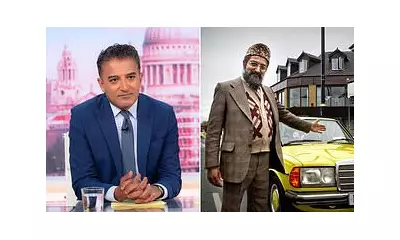
For nearly two decades, a unique form of theatre has played out across American military bases, where soldiers and civilians assume the roles of Afghan villagers, Iraqi shoppers, and insurgent fighters. Boston-based photographer Claire Beckett spent seventeen years documenting this intricate world of military role-play, creating a compelling visual record of how the United States prepares its troops for deployment.
The Cast of the Mock Battlefield
Between 2006 and 2023, Beckett visited training facilities from New York to California, witnessing how military personnel and hired civilians create simulated Middle Eastern environments. "Those portrayed in the photographs include military personnel – often veterans playing the role of enemy combatants, or immigrants from Iraq or Afghanistan," Beckett explains. "Local American civilians are hired to populate the artificial villages."
The project reveals a diverse cast of participants. Army specialist Gary Louis Sims transformed into Safah Mehdi Faris, a member of Al-Qaeda in Iraq, while Marine major John Cowait adopted the role of a warlord overseeing a Taliban training camp on a remote Afghan mountaintop in 2009. Civilian participants like Howeida Abdelrahman were paid to perform basic actions such as pretending to sell vegetables in simulated marketplaces.
Creating Realism for Combat Training
The authenticity of these exercises often relies on participants with genuine cultural knowledge. Civilian role players were frequently recruited from Iraqi or Afghan communities in the US, bringing not only their appearance but their language skills and cultural understanding to the training scenarios.
Ariel Combs, a truck driver at Fort Irwin, California, occasionally took on the role of lead insurgent. In 2017, she described her character's purpose: "I'm the bad guy. I shoot at the good guys. They're doing a patrol of a city and come into contact with our planted explosives. While they're reacting, I start shooting at them." She detailed how these scenarios typically conclude: "We launch grenades and stuff like that. They provide suppressive fire – then their helicopter comes in and drops a big bomb on us. We're completely decimated."
Beckett's photographs capture both formal portraits and spontaneous moments between mock battles. In one striking image from 2009, Marine lance corporal Joshua Stevens poses as a Taliban fighter barefoot in a river, creating what the photographer describes as having "a primordial feel."
Questioning Cultural Assumptions
Beyond documenting the training exercises, Beckett's work challenges fundamental assumptions about cultural representation and American military engagement. "I'm looking at the way Americans such as myself interact with other cultures," she states, "drawing attention to the problematic depiction of 'cultural others', and challenging the implicit assumption of American cultural superiority."
The project forced Beckett to confront the disproportionate influence of American actions worldwide. Her collection, titled "Defense Language" and available through Gost Books, serves as both documentary evidence and artistic commentary on how nations prepare for conflict and perceive foreign cultures.
Through formal portraits of participants in character, landscapes featuring makeshift Middle Eastern architecture, and informal shots of interactions during training, Beckett provides unprecedented insight into the complex preparation underlying modern military deployments. The resulting images raise important questions about cultural representation, the nature of military preparation, and how nations envision their adversaries before ever setting foot on foreign soil.





